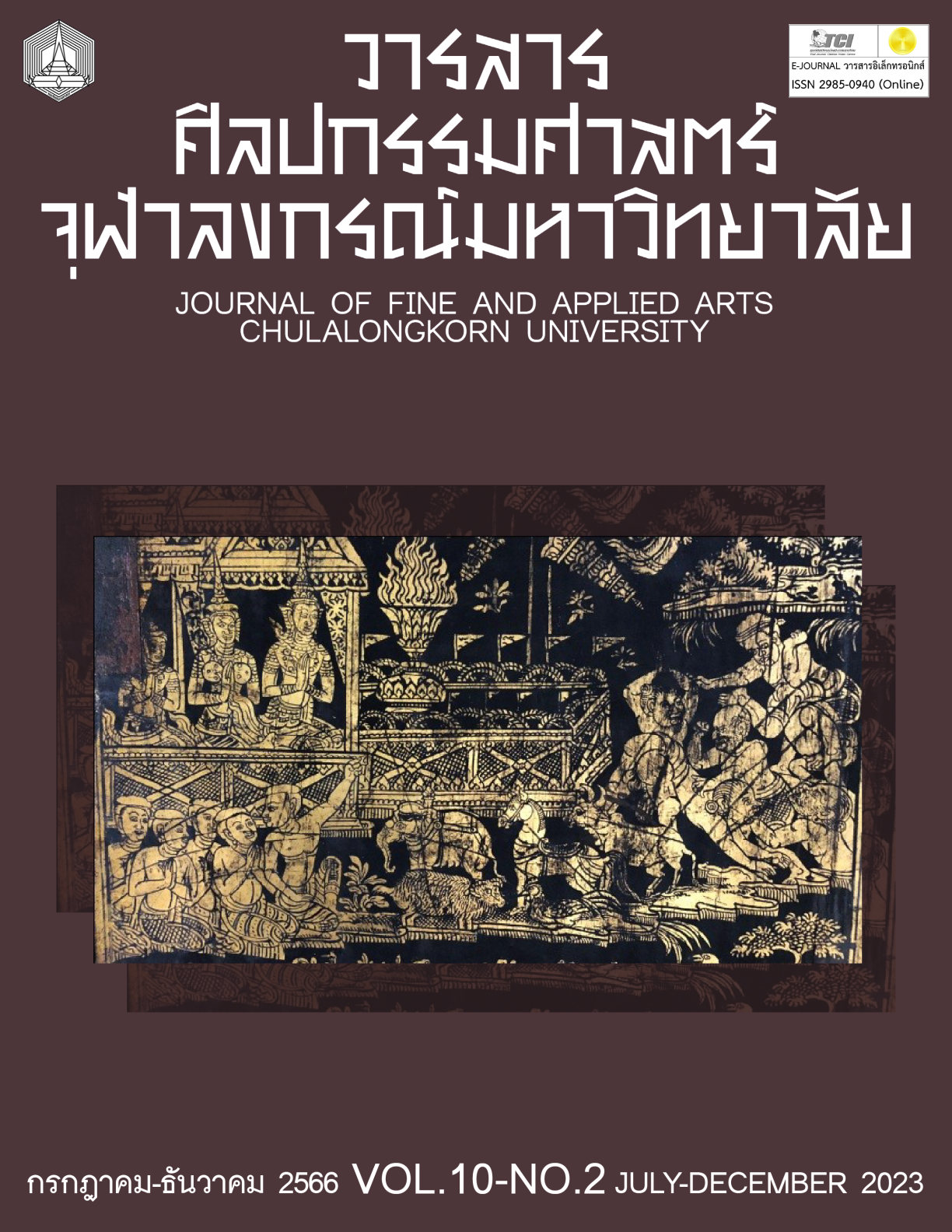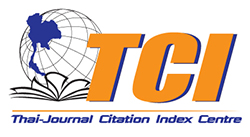THAI COMPOSITIONS WITH THE CULTURAL-MELODIC ASPECT OF THE HAE RUA
Keywords:
Thai Compositions, Melodic Aspect of the Hae Rua, the creative compositionsAbstract
The Research on Thai Compositions with the Cultural-Melodic Aspect of the Hae Rua aims to compose a song from the melody of the He Rua in Thai culture. This research uses a qualitative method research involves collecting and analyzing documents, video data, and interviewing experts in Thai music, the He Rua, and Thai language aspects.
The study found that there are 4 melodies of the He Rua in the Royal Barge Procession, namely, Klernhe, Sharlawahe, Mulhe, and Sawahe melody. Each melody uses a tremolo and a technique of Thai song singing inserted, such as making Kran, Prip, Euan, Proi sounds and using the nasal sound. Researcher has taken the He Rua melodic characteristics to create the new composition, called the Tosarachamahachakriwong suites. It consists of 4 songs, namely, Thikachatpraram, Hongsayatra, Puayphuchong, and Tharatharnphirom. The researcher's song has been composed in the form of Kaphaerua poem. It consists of 1 verse of the Klong Sisupapa poem and 10 chapters of the Kapayani 11 with contents of observing the royal prestige and saying about the royal duties of King Vajiralongkorn in taking care of the Thai people. The researcher conveys those contents through the song to make the readers loyal to the King, which is the value of the Thai people from the past to the present. There are 4 ranges of content including Episode1, Wachiraklaochaochomracha, Phase 2, the people join in the joy, Phase 3, under the royal patronage, and Phase 4, Long live the Chakri monarchy. In composing a melody, the researcher has brought the melody of He to create a song on the first version. After that, another three versions for a changing way, namely, Thang Kraw, Thang Phaun, and Thang LooklorLookkhad, have been completely composed according to the characteristics of the Thai melody. Thang Rong has also been composed according to the first version melody and set to play along with to music.
References
Banchongsinlapa, Orwan. Thai music arts. Bangkok: Institute of Thai Studies, 2003.
อรวรรณ บรรจงศิลป. ดุริยางคศิลป์ไทย. กรุงเทพฯ : สถาบันไทยศึกษา, 2546.
Chaimano, Bunluea. Poems Composing. Bangkok: Kasetsart University Press, 2006.
บุญเหลือ ใจมโน. การแต่งคำประพันธ์. กรุงเทพฯ : สำนักพิมพ์มหาวิทยาลัยเกษตรศาสตร์, 2549.
Chaiseri, Phichit. Composition of Thai songs. Bangkok: Chulalongkorn University Press, 2014.
พิชิต ชัยเสรี. การประพันธ์เพลงไทย. กรุงเทพฯ : สำนักพิมพ์แห่งจุฬาลงกรณ์มหาวิทยาลัย, 2557.
Manlikamas, Kulap. Literature Review. Bangkok: Ramkhamhaeng University Printing, 2005.
กุหลาบ มัลลิกะมาส. วรรณคดีวิจารณ์. กรุงเทพฯ: โรงพิมพ์มหาวิทยาลัยรามคําแหง, 2548.
Ministry of Culture. The Royal Barge Procession. Bangkok: Amarin, 2021.
กระทรวงวัฒนธรรม. ขบวนพยุหยาตราทางชลมารค. กรุงเทพฯ : อมรินทร์, 2564.
Pidokrat, Narongchai. Creative art theory. Handout for the course of Research Methods and Creation in Music Course Code 434-401, Doctor of Fine Arts Program in Music. Bangkok: Bunditpatanasilpa Institute, 2019.
ณรงค์ชัย ปิฎกรัชต์. ทฤษฎีการสร้างสรรค์ศิลป์ เอกสารประกอบการเรียนรู้รายวิชาระเบียบวิธีวิจัยและการสร้างสรรค์ทางดุริยางคศิลป์ รหัสวิชา 434-401 ระดับดุษฎีบัณฑิตหลักสูตรศิลปดุษฎีบัณฑิต สาขาวิชาดุริยางคศิลป์. กรุงเทพฯ : สถาบันบัณฑิตพัฒนศิลป์, 2562.
Tramot, Montri. Characteristics of Thai. Bangkok: Thai Wattanapanich, 1998.
มนตรี ตราโมท. ลักษณะไทย. กรุงเทพฯ : ไทยวัฒนาพานิช, 2541.
Tumchai, Thirayut. “He ruea in the Royal Barge Procession.” Master thesis, Chulalongkorn University, 2006.
ธีรยุทธ ตุ้มฉาย. “การเห่เรือในกระบวนพยุหยาตราชลมารค.” วิทยานิพนธ์ระดับปริญญามหาบัณฑิต, จุฬาลงกรณ์มหาวิทยาลัย, 2549.
Downloads
Published
Issue
Section
License
Copyright (c) 2023 SIRILAK CHALONGTHAM, DUSSADEE MEEPOM, SUPUNNEE LEUABOONSHOO

This work is licensed under a Creative Commons Attribution-NonCommercial-NoDerivatives 4.0 International License.
ลิขสิทธิ์ของบทความเป็นของเจ้าของบทความ บทความที่ได้รับการตีพิมพ์ถือเป็นทัศนะของผู้เขียน
กองบรรณาธิการไม่จำเป็นต้องเห็นด้วยและไม่รับผิดชอบต่อบทความนั้น






